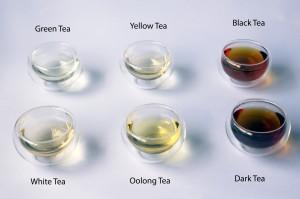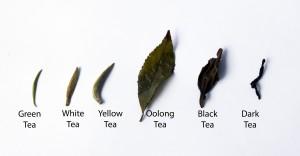One of the most commonly quoted debunked myths is that apart from dark teas (heicha including Pu-er), teas are not fermented but rather oxidized. Even fairly new tea drinkers are quick to point out this fallacious statement that seemingly even experts make.
There are many instances of well-written articles or videos with a decent amount of information that received single comments like “oxidized not fermented, get your facts right”- a single statement that threatens to destroy the credibility of the article.
But why do experts make this rookie mistake that even casual tea drinkers are aware of.
An Expert’s Rookie Mistake?

Is that a case of ignorance?
It would be hard to conceive that authors with such a wealth of knowledge as those gents would not know something that even Wikipedia editors do.
It’s a matter of habit or convention. Such as even a primary school student would know that the phenomenon is a matter of the earth rotating but nevertheless professors and luminaries continue to call it “sunrise” or “sunset”.
This is not an age old problem or a case of mistranslation from Chinese, as an article I’ve read suggested. Rather it begun fairly recently- at least considering the span of tea- in 1890. Y. Kosai of Japan first coined the phrase “fermentation” in relation to the process formerly known as ‘wo hong’ (渥红) which is crudely translated ‘heaping until it’s red’.
After that the name stuck.
It was only later that research and experiments disproved this description but by then the name commonly appeared in industry publication and was ingrained in the minds of old timers.
Hence, often today, to avoid confusion and out of convention, many experts continue to call it ‘fermentation’ even though they know it refers to something else.
But what that ‘something else’ is, depends on the chemical reaction or the production process.
Chemical Reaction

This is physically evident in the darkening of tea leaves and a ‘reddening’ of the tea liquor.
To best compare this, compare green tea versus black tea, the two ends of the spectrum. The green tea liquor is pale green, while the theaflavins and tearubigins give the reddish hue in the liquor.
This chemical reaction is best referred to as oxidation.
Process
In the production of black tea, there is a stage known as ‘fermentation’. After pickings, the tea leaves are left to wither, then ‘rolled’ or shaped. There after they undergo a stage known as ‘fermentation’ whereby the enzymatic activity is increased through heat, humidity and oxygen to increase the oxidation of the tea leaves.
In conventional manufacturing this is done indoors with an ambient room temperature of circa 25°C, relative humidity in excess of 90%. This process speeds up the metabolism of the polyphenols and completes the oxidation.
It was discovered that the oxidation is sped up by the breaking of the tonoplast, a membrane that surrounds the vacuole or the plant cells. This is often done by rolling the leaves during the shaping process or rattling the leaves in the processing of oolong tea.
The process in itself was traditionally referred to as ‘wo hong’, somewhat similar to ‘wo dui’ in the production of black tea.
‘Fully Fermented’, ‘Un-fermented’ and ‘Semi-Fermented’ Teas
Hence once we understand that ‘fermentation’ in the traditional sense of the word, refers to the chemical reaction as well as the production, we can better understand what the different categories of tea mean.

For black teas, the leaves undergo the stage known as ‘fermentation’ to allow the leaves to ‘fully oxidized’ (although it may not be 100% oxidation). The teas are withered, rolled to destroy the tonoplast, then placed in a high heat, high humidity environment with ample oxygen before baking dry. Hence the phrase ‘fully fermented’ is used to describe it.
For oolong teas, the teas are withered, rattled to partially destroy the cell structure, rolled to further destroy it, then undergoes shaqing to destroy the enzymes before it is roasted or baked dry. This is then known as ‘semi-fermented’.
In these 3 types of teas, the word ‘fermented’ can refer to the chemical process properly known as ‘oxidation’ or the production stage properly known as ‘wo hong’ although in the case of oolong tea, it is a different version.
Then there is the oxidation that occurs in withering or post-production but its best discussed in a separate post.
Hopefully after reading this, you would have a better understanding of oxidation and ‘fermentation’, the chemical process and production stage.
For further reading, please refer to these publications where the information for this article was predominantly sourced:
1) (制茶学)Zhi Cha Xue by Anhui Agricultural Institute published by China Agricultural Publishers
2) (中国茶叶大词典) Zhong Guo Cha Ye Da Ci Dian edited by Chen Zong Mao published by China Light Industry Publishers
3) ( 茶学概论) Cha Xue Gai Lun by Zhou Ju Gen and Zhu Yong Xin by China TCM Publishers
